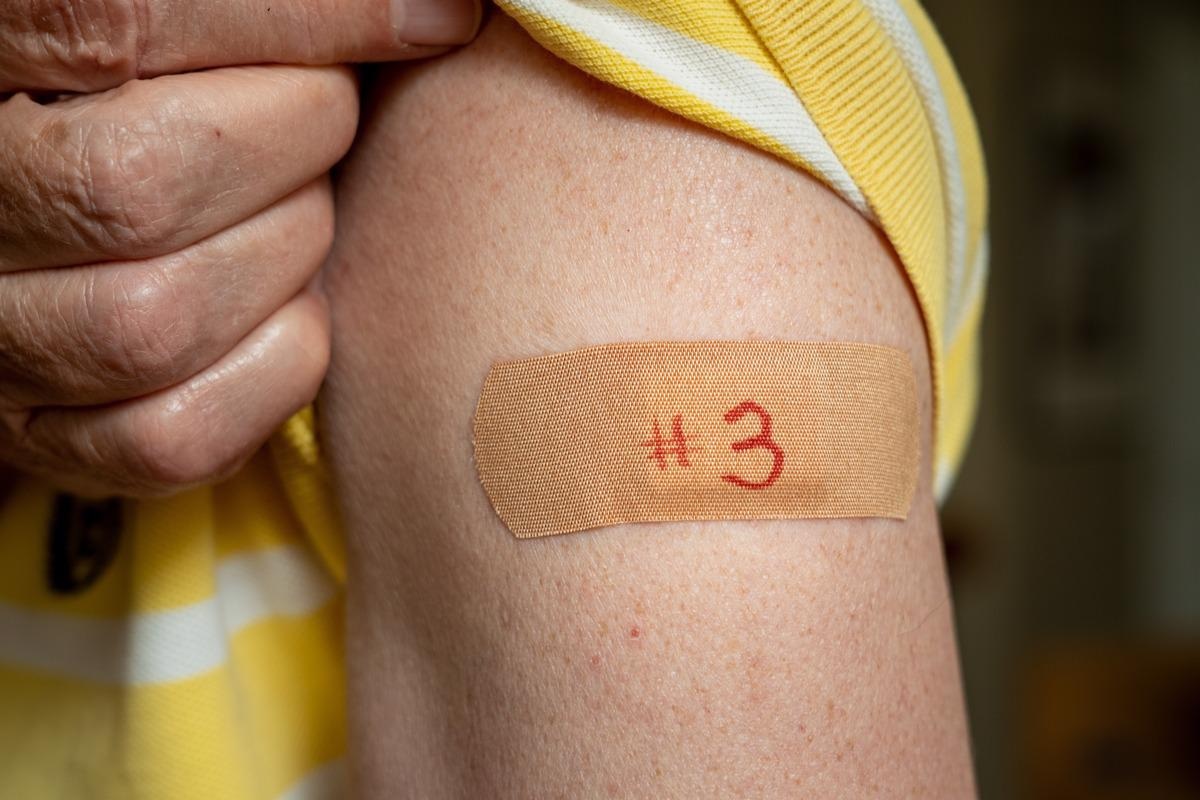Breakthrough severe acute respiratory syndrome coronavirus 2 (SARS-CoV-2) cases are commonly reported late. Even among individuals who have received two doses of coronavirus disease 2019 (COVID-19) vaccines, breakthrough infections are not uncommon. The emergence of new variants of concern (VOCs) and waning of the anti-spike antibody (anti-S) that occurs within a few months after vaccination have been implicated in the SARS-CoV-2 infections despite vaccination
Consequently, booster vaccinations have been recommended for the elderly and individuals who are clinically vulnerable to severe COVID-19 outcomes, as well as front-line workers and immunocompromised individuals. In the United Kingdom (U.K.), booster dose recommendations encompassed the entire adult population post the arising of the Omicron (B1.1.529) variant.
BNT162b2 (Pfizer-BioNTech) and ChAdOx1 nCoV-19 (Oxford-AstraZeneca) are the two most commonly used COVID-19 vaccines in the U.K.—which recruit different immunogenic processes. Scientists have found that ChAdOx1 induces substantially lower peak antibody levels after the second vaccination dose and predisposes to a higher risk of breakthrough infections than those with BNT162b2.
 Study: Anti-spike antibody trajectories in individuals previously immunised with BNT162b2 or ChAdOx1 following a BNT162b2 booster dose. Image Credit: Steve Heap/Shutterstock
Study: Anti-spike antibody trajectories in individuals previously immunised with BNT162b2 or ChAdOx1 following a BNT162b2 booster dose. Image Credit: Steve Heap/Shutterstock
The study

 *Important notice: medRxiv publishes preliminary scientific reports that are not peer-reviewed and, therefore, should not be regarded as conclusive, guide clinical practice/health-related behavior, or treated as established information.
*Important notice: medRxiv publishes preliminary scientific reports that are not peer-reviewed and, therefore, should not be regarded as conclusive, guide clinical practice/health-related behavior, or treated as established information.
A new study published in the medRxiv* preprint server aimed to investigate the mechanism by which the third booster BNT162b2 dose impacts anti-S levels.
This cross-sectional analysis utilized capillary blood samples from vaccinated adults participating in a prospective community cohort study in England and Wales.
The present study entailed testing sera for antibodies to the S1 subunit of the wild-type SARS-CoV-2 spike protein and for antibodies to the full-length nucleocapsid protein – as a proxy for prior SARS-CoV-2 infection. Serological results were correlated to the baseline demographic and clinical data collected, as well as with weekly self-reported vaccination status.
Here, anti-S levels were analyzed weekly, after the third COVID-19 vaccination dose. Additionally, anti-S levels post-second dose were compared to those after booster doses.
Findings
From the post-booster cohort, a total of 7,406 valid samples were collected from 4,682 adults, while in the post-second dose cohort, 24,271 valid samples were derived from 8,680 adults. The results showed that anti-S levels peaked two weeks after the booster vaccination dose in individuals who had received second doses of BNT162b2 and ChAdOx1.
The anti-S peak levels after booster doses were higher than the corresponding peak antibody levels post-second dose for BNT162b2 and ChAdOx1. Meanwhile, the vaccine type, age, sex, or clinical vulnerability did not impose any difference.
However, after the booster vaccination doses, the anti-S levels declined in BNT162b2 and ChAdOx1 second dose recipients. The rates of reduction in the anti-S levels post-booster were higher than those after the second vaccination doses. In individuals given BNT162b2 as the second dose, median anti-S levels at 26 weeks would be 1,487 U/m post-booster; this parameter would be 1,285 U/mL at 26 weeks after the second dose.
Therefore, although peak anti-S levels are higher post-booster than post-second dose, they tend to equalize after six months in BNT162b2 recipients. Post-booster antibody levels did not seem to vary with the second dose vaccine type. In comparison, the antibody responses post-second dose were substantially lower for ChAdOx1 than for the BNT162b2 vaccine.
In addition, the post-booster anti-S response was comparable across age groups and among diverse populations having different comorbidities and immune statuses. The greater effectiveness of booster vaccination than two-dose vaccination schemes against symptomatic infection with the Omicron variant can be explained by the higher peak anti-S levels obtained after booster doses.
Owing to the greater immune escape capacity of the omicron variant, higher circulating antibody levels would be required for protection against this infection. Besides circulating antibodies, other immune responses, such as those expressed by T and B cell memory cells, may also partially confer protection against severe disease.
The threshold for breakthrough infection with the Omicron variant is currently unknown. Despite the faster waning of anti-S levels ten weeks after the booster vaccination dose, the levels are sustained above thresholds for breakthrough infection with the Delta variant.
Inference
The findings may guide the recommendations for future booster vaccinations and may even help strategize four-dose vaccination regimens for vulnerable populations. Due to the higher anti-S peaks achieved by booster vaccinations, they are promising strategies for protecting against symptomatic infection and severe outcomes—across age groups and among diverse populations with different comorbidities.

 *Important notice: medRxiv publishes preliminary scientific reports that are not peer-reviewed and, therefore, should not be regarded as conclusive, guide clinical practice/health-related behavior, or treated as established information.
*Important notice: medRxiv publishes preliminary scientific reports that are not peer-reviewed and, therefore, should not be regarded as conclusive, guide clinical practice/health-related behavior, or treated as established information.